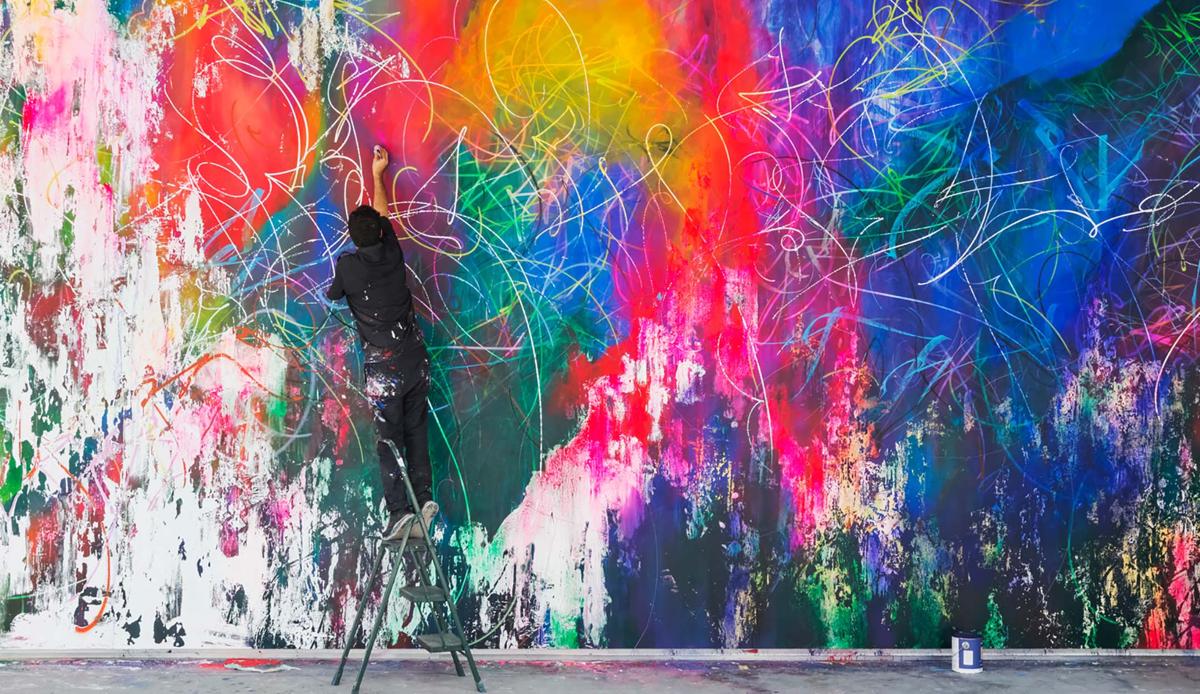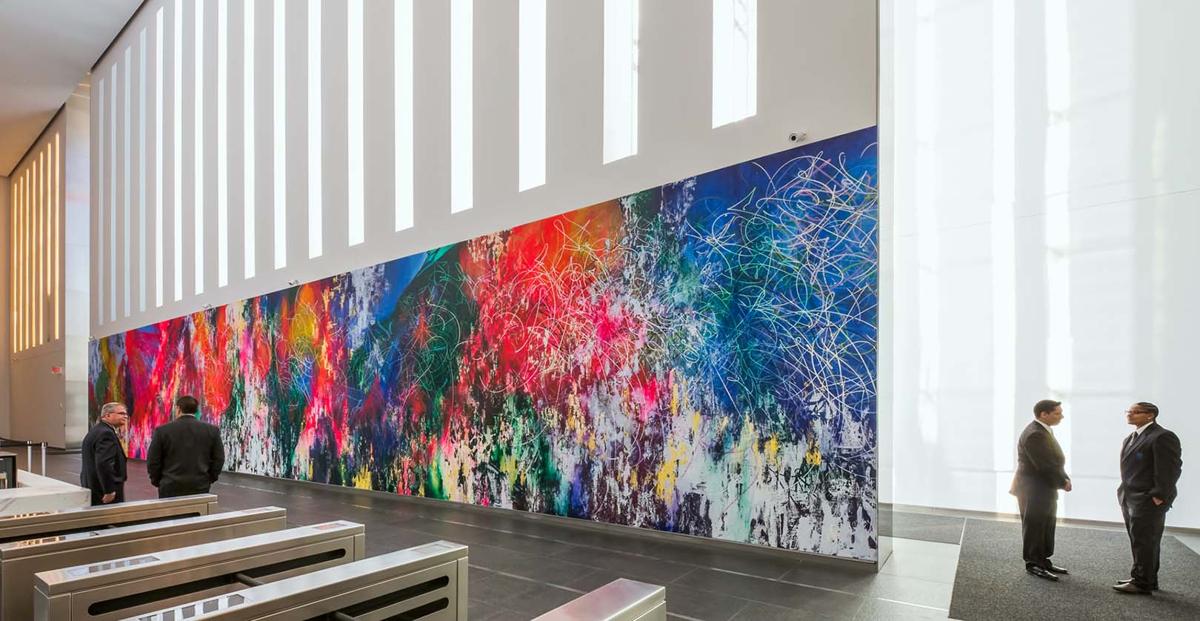December 16: Names of Jesus VI
♫ Music:
Day 14 - Saturday, December 16
Title: Names of Jesus VI
Scripture: Isaiah 9:7
There will be no end to the increase of His government or of peace, On the throne of David and over his kingdom, To establish it and to uphold it with justice and righteousness From then on and forevermore. The zeal of the Lord of hosts will accomplish this.
Poetry:
Christ amongst the refugees
By Malcolm Guite
That fearful road of weariness and want,
Through unforgiving heat and hate, ends here;
We narrow sand-blown eyes to scan this scant
And tented city outside Syria.
He fled with us when everything was wrecked
As Nazarene was blazoned on our door,
Walked with the damaged and the derelict
To where these tents are ranked and massed, foursquare
Against the desert, with a different blazon;
We trace the letters: UNHCR,
As dark smoke looms behind a cruel horizon.
Christ stands with us and withstands, where we are,
His high commission, as a refugee;
To pitch his tent in our humanity.
NAMES OF JESUS VI
I know someone who is synesthetic. Her senses are such that words, concepts, and sounds have particular colors and a certain definite architectural structure in her mind’s eye. She experiences a union of senses. This might be a wonderful symbol of experiential reconciliation of all things were it not for the constant reminder that most people do not experience their processing of the world in such a rich sensory blend as she does. However hard I try, words have no color for me. Even the words for colors are just words and not the colors themselves. She and I are not of one mind.
Can we ever all hope to be of one mind? What would that look like? Given the fascinating and God-given diversity of who we are as individuals, is there really hope for a social union of the senses? Would we not call this peace? Is this the reconciliation toward which Alexandre Desplat’s composition would bend our ears? From whence shall it come? Isaiah prophesies our answer. His name is Jesus.
New York based, Cuban-American artist, José Parlá, creates a mural of color, warmth and welcome to the One World Trade Center, next to the National September 11 Memorial. What a commission! How do you create art in the place of intense loss? The place that recollects and reflects upon the enduring threat of terrorism? Parlá did so with this 90 foot mural ONE - Union of the Senses that greets approximately 20,000 daily entrants to the building. The vision is grand, bright, and hopeful.
Art can propose hope, but cannot enact policy. Art cannot govern. I’ll leave it to readers and critics to discern if this particular piece of art would govern, and so fall into the self-destruction that is ideological propaganda. The fact is that governments, that arrange our lives for our collective prosperity or decline, only do so for a time. Certainly a Cuban-American painter reflecting on that hyphenated heritage knows this. Dissatisfaction, or even boredom, can end a political party’s electoral hold on power in a democracy. Dissent leading to resistance and revolt will undermine and topple tyrants. Sometime decrepitude, dementia, and death must do their work on governors for the governed to taste freedom.
However it may be, people are often victims of these variegated and at times vicious changing political fortunes. They are caught up, and at times, cast out. The recent movement of refugees fleeing persecution and war in Syria occupies Malcolm Guite’s poem. Governments fail to secure peace as the domestic turmoil of failed policies in failing states flings migrants to the winds. All governments come to an end in failure. They fail us as they fail, just as we fail our common humanity as we use our governments as bulwarks against each other states’ flung failures, freedom fliers, and forced fugitives.
A painting optimistically entitled ONE-Union of the Senses elicits hope of togetherness in diversity through the universal appeal of color in abstraction. It is also clear that painting can foreground that hope but not achieve its goal. Only, as Isaiah 6:7 says, ‘the zeal of the Lord of Hosts will do this’.
Indeed, our Advent confession is that the Nazarene does have that power. Guite’s poem seemingly locates the hope of refugees in the UNHCR, but then reveals that ultimate hope is not in the political institution of shared world wide governmental cooperation, but in Christ. “He fled with us…” The God who has come to tent/tabernacle among us, even now, as a display of his kingdom rule as a lowly high commissioner and fellow-refugee, walks amidst our longing for righteousness. Between the advents of Christ, we still long for that “union of senses,” where peace never ends, and justice and righteousness rule without corruption, tyranny, or plain old incompetence.
The synesthete sees the world in a different way to most, but her union of senses is a private one.
José Parlá’s mural publicly proclaims a hope for union on the very ground scorched by hatred and disunity.
This Advent season, we proclaim the one who sits on the throne of David, the Christ, God with us. Even now, we hope to taste and see that the Lord is good in his governance for evermore.
Prayer:
Come, Lord Jesus, God with us, in Your kingdom power and authority, and grant us peace.
Amen.
Andy Draycott
Associate Professor of Theology and Christian Ethics
Talbot School of Theology
Biola University
About the Artwork:
ONE: Union of the Senses, 2014
José Parlá
15’ x 90’
Acrylic, ink, enamel and plaster on fibreboard
One World Trade Center
Lower Manhattan, New York
“The message of the work is unity,” says artist José Parlá of his monumental painting at the World Trade Center. “ONE: Union of the Senses is all about how much more unity we need in this world. It’s also a love letter to New York. New York, to me, is one of the cities where you see a lot of diverse groups of people from all over the world, different types of cultures, living more or less peacefully.” One World Trade Center is the main building of the rebuilt World Trade Center complex in Lower Manhattan, New York. The building, the tallest in the Western Hemisphere, has the same name as the North Tower of the original World Trade Center, which was destroyed in the terrorist attacks on September 11, 2001. Parlá worked on ONE: Union of the Senses for eight months in his studio and two weeks on-site.
About the Artist:
José Parlá (b. 1973) is a multidisciplinary artist in painting, large-scale murals, photography, video, and sculpture. His colorful multimedia work integrates ideas of art and architecture by blurring the lines between identity, environment, graffiti, and language. His work has been exhibited in the US and internationally in Cuba, the United Kingdom, Japan, and Canada. His permanent public arts projects include works in One World Trade Center, the Barclays Center in Brooklyn, the Brooklyn Academy of Music BAM Fisher, André Balazs’ Chiltern Firehouse in London, UK; North Carolina State University Hunt Library and at Concord CityPlace in Toronto, Canada. Parlá currently lives and works in Brooklyn, New York.
About the Music:
“Reconciliation” from the album Extremely Loud and Incredibly Close: Original Motion Picture Soundtrack
About the Composer:
Award-winning French film composer Alexandre Desplat (b. 1961) has won numerous nominations and awards for his work in French and American cinema. In addition to writing music for films such as Harry Potter and the Deathly Hallows, Tree of Life, and The Grand Budapest Hotel, Desplat wrote the soundtrack for the movie adaptation of Extremely Loud and Incredibly Close, a book about an autistic boy's journey of processing his father's death in the 9/11 attacks on the World Trade Center in Lower Manhattan, New York.
About the Performer:
Jean-Yves Thibaudet (b.1961) is a world-famous French pianist, sought-after for performances in concert halls and recording studios. He is particularly known for his interpretations of French classical music, but also plays other diverse styles ranging from opera transcriptions to jazz and film scores.
About the Poet:
Malcolm Guite (b. 1957) is a poet, author, Anglican priest, teacher and singer/songwriter based in Cambridge, England. He has published six collections of poetry: Saying the Names, The Magic Apple Tree, Sounding the Seasons: Poetry for the Christian Year, and The Singing Bowl, Waiting on the Word and the recently released Parable and Paradox: Sonnets on the Sayings of Jesus and Other Poems. His writing has been acclaimed by Rowan Williams and Luci Shaw, and his Antiphons appeared in Penguin’s Best Spiritual Writing 2013. Malcolm’s theological works include What Do Christians Believe? and Faith, Hope, and Poetry: Theology and the Poetic Imagination. He has just released a new book, Mariner: A Voyage with Samuel Taylor Coleridge. It is an authoritative and accessible biography of Coleridge told through his most famous poem, “The Rime of the Ancient Mariner.” Guite is a scholar of J.R.R. Tolkien, C.S. Lewis, and the British poets, and serves as Bye-Fellow and chaplain at Girton College at the University Cambridge while supervising students in English and theology. He lectures widely in England and the USA, and in 2015 he was the CCCA Visionary-in-Residence at Biola University. Guite plays in the Cambridge rock band Mystery Train and his albums include The Green Man and Dancing through the Fire.
About the Devotional Writer:
Andy Draycott is a British immigrant scholar living in Southern California with his family. He is a lifelong Charles Schultz’ Peanuts fan, enjoys reading novels and social history, cycling, running and baking. Currently, he is an Associate Professor of Theology and Christian Ethics at Biola’s Talbot School of Theology. He counts God’s blessings in Christ, in local church, in family life, and in delightful work colleagues.

